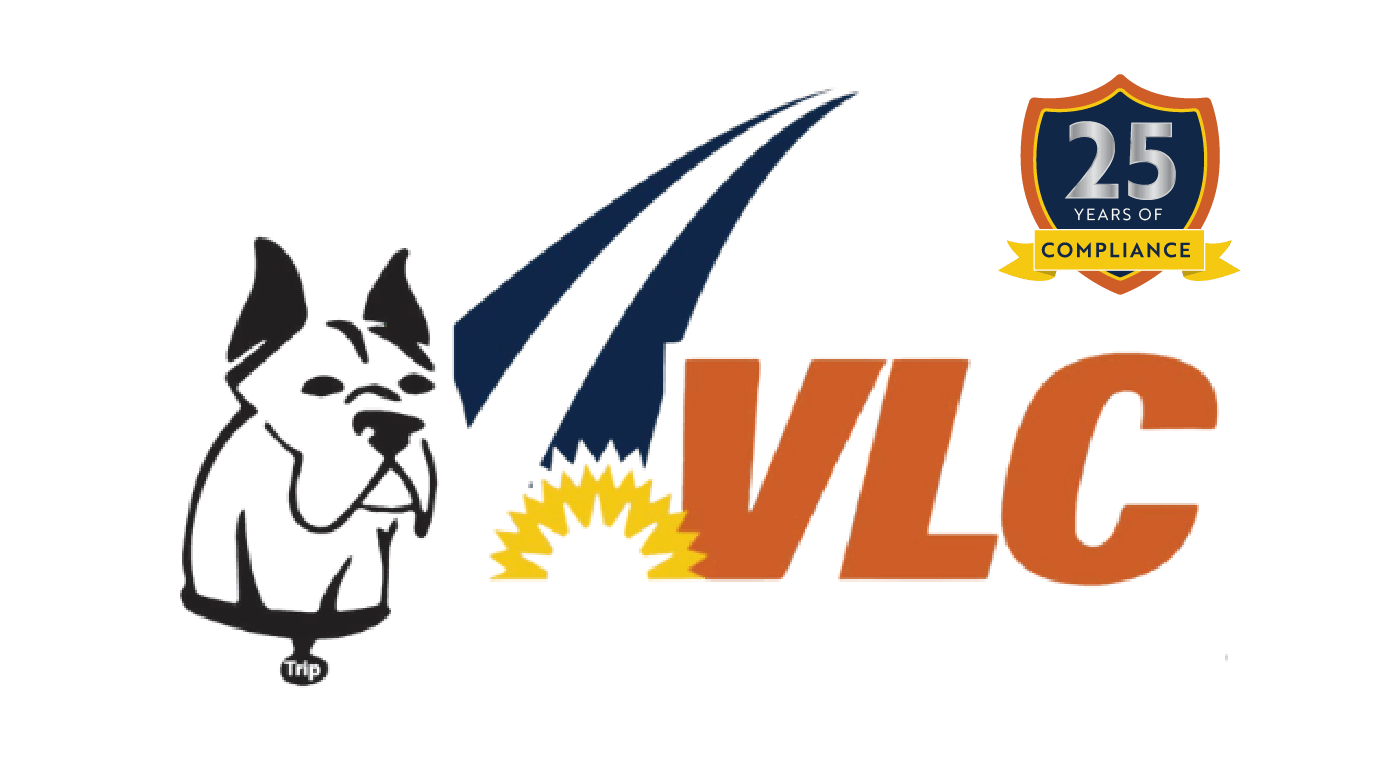
Uncategorized
California has enacted a landmark employment law that will reshape how carriers and logistics firms structure contracts with drivers and staff. Starting January 1, 2026, the state prohibits “stay-or-pay” provisions, contract terms requiring workers to repay training costs, bonuses, or fees if they leave before a set period.
This shift affects every trucking company operating in California, from owner-operator fleets to national carriers. Whether you hire drivers, dispatchers, or warehouse staff, understanding compliance matters now.
What AB 692 California Trucking Law Prohibits
The law targets employment contracts signed on or after January 1, 2026. It bans any provision that requires workers to pay back their employer, training provider, or debt collector when employment ends.
Prohibited Contract Terms Include
Companies can no longer require repayment of training costs, licensing fees, or operational expenses when a worker quits or faces termination. The law also bars debt collection authorization by employers or third parties after employment ends.
Additionally, carriers cannot impose penalties such as retraining fees, “quit” charges, liquidated damages, replacement hiring costs, or lost goodwill assessments tied to employment termination.
California treats these clauses as unlawful restraints on professional practice. For trucking employers who previously required drivers to repay training investments or return sign-on bonuses for early departure, these provisions face elimination under the new standard.
How This Changes Driver Employment in California
Benefits for Drivers and Job Seekers
Workers gain substantially increased mobility and freedom. Drivers can accept employment or training without concern about financial penalties for leaving. The law removes debt-based contract traps.
The transportation sector has historically used repayment provisions for training, licensing, certifications, and relocation assistance. These practices now face prohibition when structured as debt payback arrangements.
Requirements for Employers and Fleets
Carriers must audit existing agreements immediately. All employment contracts, training repayment forms, sign-on bonus agreements, and retention bonus structures need review and revision before January 2026 to prevent legal exposure.
The statute includes narrow exceptions for specific repayment obligations, but these carry strict requirements. Permitted arrangements include contracts for discretionary signing bonuses and tuition for transferable credentials like commercial driver’s licenses, but only when companies follow precise conditions: separate agreements, prorated repayment terms, mandatory attorney consultation rights, zero interest charges, and additional safeguards.
Impact on Recruitment Incentives
Many carriers offer sign-on bonuses or training reimbursement programs to attract qualified drivers. AB 692 restrictions require structural changes to these arrangements, potentially affecting enforceability. Some fleets may need to reconsider retention-based bonus schemes entirely.
Non-compliance creates significant legal risk. Violations subject employers to civil actions with minimum penalties of $5,000 per affected worker, plus injunctive relief, attorneys’ fees, and costs.
Why Transportation Companies Face Major Changes
The trucking and logistics industries have long depended on repayment and clawback arrangements to offset investment in new hires. Common practices included:
Training new drivers in compliance protocols, safety standards, commercial license preparation, and specialized equipment operation represents substantial carrier expense. To protect these investments, companies traditionally used “stay-or-pay” agreements conditioning cost coverage on minimum employment periods.
Sign-on and retention bonuses attracted drivers with expectations of specific tenure requirements or bonus repayment obligations. Under AB 692 California trucking regulations, these traditional approaches require complete reimagining.
The legislation recognizes that worker-driven debt, even when presented as voluntary, functions as an unfair mobility restriction that traps employees in positions.
For companies operating in or recruiting from California, this represents a genuine paradigm shift. Compliance extends beyond legal housekeeping to affect recruiting costs, retention strategies, and training investment approaches.
Understanding Permitted Exceptions Under AB 692
The law isn’t absolute. Several important exceptions allow specific repayment agreements to continue.
Transferable Credentials Like Commercial Driver’s Licenses
Companies may still require repayment for obtaining transferable credentials such as CDLs, but only under these strict conditions:
The repayment contract must exist separately from the employment agreement. Obtaining the credential cannot be an employment condition—workers cannot be required to get the credential as a hiring prerequisite.
The repayment amount cannot exceed actual employer costs. Repayment must be prorated without acceleration clauses. No repayment is required if the company terminates the worker, unless termination results from misconduct.
The critical challenge: Most CDL training programs currently make credential completion an employment condition, meaning drivers must finish training before hiring. These programs likely won’t qualify for this exception as currently structured.
The key distinction is that while a CDL is obviously required to drive trucks, the law prohibits making the training itself a prerequisite for employment if companies want to retain repayment ability.
Carriers must fundamentally restructure CDL training program approaches to use this exception, potentially treating credentials as something workers obtain independently or after hire rather than during the hiring process.
Discretionary Financial Bonuses
Contracts for discretionary monetary payments at employment start may include repayment terms if companies meet certain strict conditions. These include separate repayment terms, notification of attorney consultation rights with at least five business days to exercise them, prorated repayment based on retention periods not exceeding two years without interest, the option to defer payment receipt, and repayment only required for voluntary separation or misconduct-based termination.
This exception provides a pathway for carriers to continue using sign-on bonuses as recruitment tools, though with more worker-friendly terms.
Apprenticeship Programs
Contracts related to enrollment in apprenticeship programs approved by California’s Division of Apprenticeship Standards are exempt from prohibitions. This creates opportunities for carriers to develop formal apprenticeship structures meeting state standards.
Government Loan Programs
Contracts entered under loan repayment assistance programs or loan forgiveness programs provided by federal, state, or local government agencies also receive exemptions.
Compliance Steps for Trucking Companies
If you operate a trucking or logistics company in California or recruit drivers there, follow this compliance checklist:
Audit All Employment Agreements
Inventory all employment-related agreements including sign-on bonuses, retention bonuses, training repayment agreements, onboarding contracts, and relocation or license-cost reimbursement plans.
Remove Prohibited Clauses
Eliminate or revise any “stay-or-pay” or debt-repayment clauses tied to employment termination.
Restructure Bonus Programs
If offering bonuses or reimbursements after January 1, 2026, ensure they meet narrow exception criteria with separate contracts, upfront notice, and prorated repayment where applicable. Consider offering bonuses or reimbursements without repayment obligations as unconditional benefits.
Train Internal Teams
Educate HR personnel, recruiters, and legal/compliance teams about the new law so prohibited clauses don’t appear in future contracts.
Communicate with Workers
Inform your workforce and new hires about their rights to avoid misunderstandings around departure obligations.
Consult Legal Counsel
Work with qualified employment law attorneys, especially if you currently use or plan to use loan-based incentive structures, training investments, or repayment obligations. Given AB 692’s complexity and significant non-compliance penalties, professional legal guidance is essential to ensure your specific practices meet requirements.
AB 692 in the Broader Regulatory Context
AB 692 arrives while California trucking companies still adjust to other significant regulatory changes. AB5’s restrictions on independent contractor classification have already forced many carriers to reclassify owner-operators as employees. Now AB 692 limits how companies structure employment terms for those workers.
This dual regulatory pressure creates a challenging environment. Carriers must hire drivers as employees while facing restrictions on training investment recoupment and retention incentive structuring. For many companies, this requires fundamental rethinking of recruitment and retention strategies.
Beyond California, similar laws are under consideration in other states. Federal agencies including the Consumer Financial Protection Bureau and Federal Trade Commission have increased scrutiny of training repayment agreements across industries. California developments often signal broader national trends.
Moving Forward: Strategic Adaptation
AB 692 California trucking regulations represent a significant shift in employment law, reaching deeply into how transportation industries recruit, train, and retain workers.
For trucking employers, compliance requires more than quick contract edits. It demands rethinking the old “we pay, you stay” model. Companies that adapt quickly by investing in genuine driver development, creating supportive work environments, and building retention strategies based on positive workplace culture rather than contractual obligations may find themselves with competitive advantages.
On the flip side, AB 692 offers drivers, especially those in demanding fields like trucking, greater freedom and protection from exploitative debt-based agreements. In an industry where the human element remains irreplaceable, treating drivers as valued professionals rather than contractual obligations may prove the best business strategy.
If you’re a carrier, recruiter, or fleet manager working with or in California, now is the time to plan. Review, revise, and rebuild your incentive and training-cost structures. The alternative isn’t just legal risk, it could hamper recruitment, retention, and workforce trust.
IMPORTANT LEGAL DISCLAIMER:
This article is for general informational and educational purposes only and does not constitute legal advice. AB 692 involves complex legal requirements with significant compliance obligations and penalties. Every trucking company’s situation is unique, and the information provided here may not apply to your specific circumstances.
Before making any changes to your employment contracts, training agreements, bonus structures, or retention programs, you should consult with a qualified employment law attorney who is familiar with California labor law and can provide specific advice tailored to your business operations. Do not rely solely on this article when making legal or business decisions regarding AB 692 compliance.
The authors and publishers of this article are not responsible for any actions taken or not taken based on the information provided herein.

TripDAWG, Uncategorized
Even the most organized fleets can face sudden compliance challenges. Recent trends show the FMCSA’s increased oversight of electronic logging devices (ELDs) is leading to more revocations than ever before.
Understanding what’s driving these changes — and how connected technology can keep your operations compliant — is key to staying ahead.
Why ELD Revocations Are Rising
The FMCSA is cracking down on ELD providers that fail to meet strict technical and data transfer requirements.
When a device is revoked, fleets have 60 days to replace it or risk major compliance issues.
If you miss that window, your operation could face:
-
Out-of-service violations during roadside inspections
-
Inaccurate logs that undermine audit readiness
-
Administrative delays as teams scramble to update records
Even one revoked ELD can disrupt driver qualification files, IFTA reports, and safety documentation.
To learn more about managing compliance records effectively, visit TripDawg.
The Risk of Disconnected Systems
Disconnected systems create compliance blind spots.
When your ELD doesn’t integrate with fuel reporting, driver files, or safety systems, errors multiply — and costs rise.
Common issues include:
-
Missing mileage data for IFTA filings
-
Manual entry errors in compliance platforms
-
Inconsistent recordkeeping across departments
-
Higher audit risk due to incomplete data
The future of compliance depends on integration, not more paperwork.
TripDAWG + Geotab: A Stronger ELD Solution
TripDAWG’s telematics platform, powered by Geotab, is built for connected compliance.
Geotab is a trusted, FMCSA-registered ELD provider that helps fleets stay compliant automatically.
With TripDAWG and Geotab, your team gets:
-
Automatic FMCSA compliance updates
-
Real-time HOS, GPS, and diagnostic data
-
Cloud-based log storage and safety analytics
-
Reliable ELD performance with active support
When you pair Geotab’s technology with TripDAWG’s compliance expertise, your fleet stays informed, efficient, and audit-ready at all times.
Explore how TripDawg supports FMCSA compliance.
The Power of Integration: TripDAWG, GW Connect, and DQM Connect
A connected fleet technology ecosystem eliminates silos and builds efficiency across your operations.
TripDAWG + GW Connect
TripDAWG’s Geotab data syncs directly with GW Connect to streamline:
-
IFTA fuel tax reporting by jurisdiction
-
IRP renewal tracking and mileage validation
-
Maintenance scheduling and asset lifecycle management
-
Centralized compliance visibility for terminals and vehicles
This integration removes manual entry and ensures your audit data is always accurate.
Learn more about TripDAWG to automate fleet compliance.
TripDAWG + DQM Connect
TripDAWG also integrates with DQM Connect to align driver qualification and safety programs with real-time data.
This connection provides:
-
Automatic license and violation monitoring
-
Safety event tracking tied to actual driving activity
-
Instant insight into driver status and compliance metrics
Together, these systems form a 360° compliance network that keeps your team proactive and connected.
Visit www.dqmconnect.com to explore driver file management tools.
Why Connected Compliance Matters
When your systems communicate, you gain visibility and confidence.
With TripDAWG, GW Connect, and DQM Connect working together, your fleet achieves:
This technology ecosystem grows with your business and keeps every department aligned.
Explore our software solutions to see how connected compliance helps fleets scale safely.
Stay Compliant. Stay Connected.
ELD revocations show no signs of slowing down — but your operations can stay steady.
Now is the time to ensure your fleet runs on certified, integrated technology that keeps compliance airtight.
With TripDAWG powered by Geotab, GW Connect for fleet and fuel tax management, and DQM Connect for driver qualification tracking, you’ll have the tools needed for continuous compliance in 2026 and beyond.
Schedule a TripDAWG demo and see how connected compliance can streamline your fleet operations and strengthen your safety culture.

Gateway Connect, Uncategorized
Running a reliable fleet requires more than just delivering loads on time.
The fleets that succeed in 2026 focus on organization, efficiency, and proactive compliance every day. They don’t wait for audits or renewals — they build smart systems and consistent habits that make compliance effortless behind the scenes.
Here are five proven fleet compliance best practices every 5-Star Fleet should master — and how GW Connect helps make them part of your daily workflow.
Habit 1: Keep Fuel Tax Reporting Accurate and Audit-Ready
IFTA reporting deadlines arrive quickly, and manual spreadsheets can lead to costly filing errors.
Smart fleets automate fuel tax reporting to save time and ensure accuracy.
With GW Connect, fuel purchases and jurisdictional mileage flow in automatically. The platform calculates taxable miles, tracks exemptions, and prepares precise quarterly IFTA reports ready for filing.
Pro Tip: Connect your telematics data through Trip Dawg so every mile and gallon updates in real time. You’ll eliminate duplicate entries and maintain clean, auditable data.
Habit 2: Stay Ahead of IRP and 2290 Renewals
Renewal delays can take trucks off the road and disrupt operations.
The most efficient fleets treat IRP and 2290 renewals as an ongoing process, not a last-minute rush.
GW Connect’s renewal dashboard provides full visibility into every plate, registration, and expiration date. Automatic alerts keep your compliance team informed long before deadlines.
Pro Tip: Assign monthly renewal checkups for each terminal or compliance team to review active credentials.
Not sure if you have what you need for headache free registration management? We break it all down on out visit our resource page.
Habit 3: Track Maintenance Before It Becomes a Problem
A well-maintained fleet stays compliant, safe, and operational.
Preventive maintenance scheduling reduces downtime, extends equipment life, and keeps inspection records current.
With GW Connect’s maintenance module, you can schedule service intervals — and document completion digitally.
Pro Tip: Integrate your telematics provider to trigger maintenance alerts automatically when mileage thresholds are met.
Habit 4: Manage Assets Through Their Entire Lifecycle
From the moment a truck joins your fleet until it’s sold or retired, detailed recordkeeping is essential.
Centralized data helps track titles, insurance, maintenance, and registration all in one place.
GW Connect’s asset management tools show what’s active, inactive, or due for renewal — giving you a clear, complete view of your fleet health.
Pro Tip: Maintain a digital “asset ID card” for every unit with photos, titles, and repair history to simplify audits and resale preparation.
Habit 5: Connect Compliance Across Your Operation
Compliance shouldn’t exist in silos. When your IFTA, driver files, and telematics data all communicate, your team works smarter.
That’s where the combined power of GW Connect, DQM Connect, and TripDAWG delivers unmatched efficiency. Together, these integrated tools:
-
Share driver, vehicle, and mileage data automatically
-
Eliminate duplicate data entry
-
Provide full visibility for operations, safety, and licensing teams
Pro Tip: Conduct quarterly compliance checkups using all three platforms to verify IFTA, IRP, and driver file accuracy before audit season.
Explore the integration benefits at GW Connect, DQM Connect and TripDAWG .
Turn Compliance Into Confidence
The best fleets aren’t reacting to compliance problems — they’re preventing them.
By following these fleet compliance best practices and using connected tools like GW Connect, your team can run a cleaner, safer, and more efficient operation in 2026.
With GW Connect, you can:
✅ Automate IFTA, IRP, and 2290 reporting
✅ Manage maintenance and asset lifecycles
✅ Centralize renewals and documentation
✅ Seamlessly connect with TripDAWG and DQM Connect
Schedule a Demo and see how a 5-Star Fleet keeps compliance running as smoothly as its trucks.
Uncategorized
Every year, fleets across the country are required to renew their registration under the Unified Carrier Registration (UCR) program. Completing your UCR annual renewal on time is essential to maintaining FMCSA compliance and preventing enforcement penalties that can disrupt operations.
Understanding who must file, when to renew, and how to complete the process ensures your fleet remains in good standing all year long.
What Is UCR and Who Needs to File?
The Unified Carrier Registration (UCR) program is a federally mandated system that requires interstate motor carriers, brokers, freight forwarders, and leasing companies to register and pay annual fees.
Registration fees are based on the size of your fleet, and filing ensures you are operating legally under FMCSA regulations. Even if you registered last year, your UCR must be renewed annually to remain valid.
For more information on UCR requirements and filing details, visit Fleet Compliance Services or Unified Carrier Registration Resources.
When to File
UCR renewals open each year on October 1 for the upcoming calendar year. You must complete your renewal and payment before January 1 to avoid enforcement actions.
Enforcement begins January 1, meaning carriers without an active registration can face fines or be placed out of service during roadside inspections.
Learn more about staying proactive with annual filings in Fleet Management Compliance Tools.
Fee Structure
UCR fees are determined by the total number of commercial motor vehicles you operate interstate. The fee schedule is established annually by the UCR Board and applies to all participating states.
Carriers operating exclusively within one state (intrastate carriers) are generally exempt, unless they also broker or arrange interstate shipments.
For detailed information on costs and fleet classifications, refer to UCR Fee Schedules and FMCSA Updates.
How to File or Renew
Renewing your UCR registration is a straightforward process when you follow these steps:
-
Visit the Official UCR Website – Navigate to www.ucr.gov begin your renewal.
- Verify Your USDOT Number – Make sure your registration details match FMCSA records.
- Pay the Annual Fee – Complete payment electronically through the UCR portal.
- Keep Proof of Payment – While credentials don’t need to be carried in vehicles, keeping documentation is recommended.
If your company name, fleet size, or operating status has changed, update your FMCSA records before completing renewal.
Explore our Resource Library for free compliance downloads and renewal tools.
What Happens If You Don’t Renew?
Failing to renew your UCR registration can lead to serious consequences, including:
-
Fines ranging from $100 to $5,000 per vehicle (depending on state)
-
Out-of-service orders during roadside inspections
-
Delays in renewing related credentials such as IFTA or IRP
Avoid unnecessary penalties by reviewing your registration status in UCR Compliance Management Tools.
Simplify Compliance with GW Connect
Managing multiple renewals — including UCR, IFTA, IRP, and permits — can be time-consuming. GW Connect, VLC’s fleet management platform, helps streamline these processes by keeping everything in one place.
With GW Connect, you can:
-
Receive reminders for all annual filings
-
Track fleet assets, licenses, and compliance records
-
Centralize renewal and audit data for easy access
Learn more about GW Connect Fleet Management Software to simplify compliance for your operations.
Partnering with VLC for Complete Fleet Compliance
For over 25 years, Vehicle Licensing Consultants (VLC) has supported fleets with consulting, licensing, and renewal management. From UCR filings to IFTA renewals, we help keep fleets compliant, organized, and audit-ready.
To stay current on all FMCSA regulations, explore our Resource Library for compliance tools, educational downloads, and filing checklists.
Uncategorized
As the year draws to a close, fleets across North America prepare for one of their most important compliance tasks: renewing their IFTA licenses. Staying organized with your IFTA annual renewal ensures smooth operations and keeps your fleet compliant through every reporting period.
Understanding how renewals work, what’s required, and when to file can help your team avoid penalties and maintain good standing with your base jurisdiction.
What Is IFTA?
The International Fuel Tax Agreement (IFTA) is a cooperative agreement among the lower 48 U.S. states and most Canadian provinces. It simplifies fuel tax reporting for motor carriers that operate in multiple jurisdictions.
Instead of filing separate reports in each state or province, carriers submit a single quarterly return to their base jurisdiction. This process reduces administrative work and ensures that fuel taxes are distributed fairly based on miles traveled and fuel purchased.
IFTA Filing Requirements
Each IFTA license holder must file fuel tax reports four times per year with their base jurisdiction. These filings include total miles traveled and gallons of fuel purchased in each participating state or province.
Quarterly Reporting Schedule
-
1st Quarter: January–March — Due April 30
-
2nd Quarter: April–June — Due July 31
-
3rd Quarter: July–September — Due October 31
-
4th Quarter: October–December — Due January 31 (following year)
If a due date falls on a weekend or holiday, it automatically extends to the next business day.
Failing to file on time can result in penalties, interest charges, or even suspension of your IFTA license — which can sideline your fleet until compliance is restored. Need a practical tool to stay on top of due dates? Download VLC’sFree IFTA Filing Resource Guide for templates, checklists, and reporting support.
Annual License Renewal
Your IFTA license and decals must be renewed annually, typically beginning in December.
Grace Period
Many jurisdictions allow fleets to operate with their prior-year credentials through February, provided your renewal application is submitted and your account remains in good standing.
Good Standing Matters
To qualify for renewal, fleets must complete all prior quarterly filings and ensure all tax payments are up to date. If you’re unsure about your renewal status, contact your base jurisdiction.
Exceptions for Low-Mileage Carriers
Some jurisdictions may allow annual filing instead of quarterly reporting, but this option requires prior approval.
Conditions: Typically available to carriers that operate fewer than 5,000 miles outside their base jurisdiction.
Annual Report Due Date: Usually January 31.
Approval Required: Always confirm eligibility with your base jurisdiction’s Department of Revenue before assuming approval.
How to File or Renew
Following a consistent process for filing or renewing your IFTA license helps reduce errors and ensures on-time compliance.
-
Contact Your Base Jurisdiction – Your state or province handles IFTA licensing, reporting, and renewals.
-
Use Online Portals – Most jurisdictions now offer electronic filing systems to simplify submissions.
-
Maintain Records – Keep trip and fuel purchase records for at least four years in case of audit.
Simplify Renewals with GW Connect
Managing renewals, reports, and deadlines doesn’t have to be complicated. GW Connect, VLC’s fleet and asset management platform, helps fleets streamline compliance across all IFTA requirements.
With GW Connect, you can:
-
Track IFTA credentials and renewal deadlines
-
Receive automated reminders for quarterly filings
-
Manage IRP, UCR, and IFTA tasks in one dashboard
-
Store documentation for audits or verification
Learn more about GW Connect or schedule a demo to see how it simplifies fleet compliance.
Your Partner in Fleet Compliance
For over 25 years, Vehicle Licensing Consultants (VLC) has supported fleets with licensing, permitting, and compliance services. From IFTA reporting to renewals, VLC helps fleets stay legal, organized, and audit-ready.
Explore our Resource Library for free educational tools and compliance downloads that make managing your fleet easier year-round.
TripDAWG, Uncategorized
When people talk about fleet efficiency, they often point to fuel, compliance, or maintenance costs. Yet one factor influences all of these areas—dispatch. The way loads are assigned impacts driver satisfaction, customer service, and profitability.
That’s why fleets are adopting fleet dispatch software to move beyond manual routing. This technology doesn’t just get trucks from Point A to Point B. It creates a connected, smarter dispatch system that benefits drivers, managers, and customers.
Why Dispatch Matters More Than You Think
Dispatchers are more than schedulers. They serve as the hub that connects drivers, customers, and managers. Inefficient dispatching creates:
-
Frustrated drivers with poorly planned routes.
-
Late appointments and dissatisfied customers.
-
Extra miles that waste both fuel and time.
Efficient dispatching, on the other hand, supports drivers, strengthens customer loyalty, and lowers operating costs.
The Power of Fleet Dispatch Software
Traditional methods—spreadsheets, phone calls, sticky notes—can’t keep up with today’s pace. Fleet dispatch software modernizes the process with features like:
-
Smarter Routing – Optimize trips in real time to cut miles and delays.
-
Load Visibility – Monitor driver availability and location at a glance.
-
Direct Driver Communication – Reduce endless phone calls with in-app updates.
-
Customer Notifications – Provide accurate ETAs to build trust.
These tools allow dispatchers to manage proactively instead of reacting to problems.
Fleet Dispatch Software and Driver Retention
Drivers frequently say dispatch “makes or breaks” their job. Poor communication and routing lead to frustration and high turnover. By using streamlined fleet dispatch software, fleets can:
-
Deliver efficient, predictable routes.
-
Improve communication with fewer misunderstandings.
-
Ensure compliance with Hours of Service.
When dispatch runs smoothly, drivers feel valued and are more likely to stay.
How Dispatch Impacts Fuel Costs
Fuel is one of the largest fleet expenses. Poor dispatching adds unnecessary miles and idle time, directly cutting into profits. Fleet dispatch software reduces waste by building efficient routes and avoiding traffic delays. Even small gains in MPG save thousands of dollars per truck annually.
TripDAWG: Connected Dispatch for the Modern Fleet
TripDAWG takes fleet dispatch software beyond simple load assignments. Our trusted technology partners provide dispatch solution to:
- Optimize routes
- Streamline operations
- Lead to happier customer
Take your fleet’s dispatch system to the next with a full ecosystem of solutions:
- Routing + ELDs – Sync hours-of-service data with load planning.
- Fleet Cameras & Safety Tools – Use safety insights for smarter assignments.
- Asset Tracking – Match the right trucks with the right trailers.
- Fuel Programs – Pair routing with cost-saving fuel strategies.
With TripDAWG fleet dispatch software is just the beginning to your operation efficiency. Unify dispatch, increase safety, and crush your compliance.
Final Thoughts
Dispatch is the heartbeat of a fleet. Poor systems cost money, drivers, and customers. Smart dispatching reduces fuel, keeps drivers satisfied, and builds customer trust.
Fleet dispatch software is no longer optional—it’s essential. With TripDAWG, fleets get connected dispatching that strengthens every part of their operation.
Ready to see smarter dispatch in action? Give us a call! 530-384-3884




